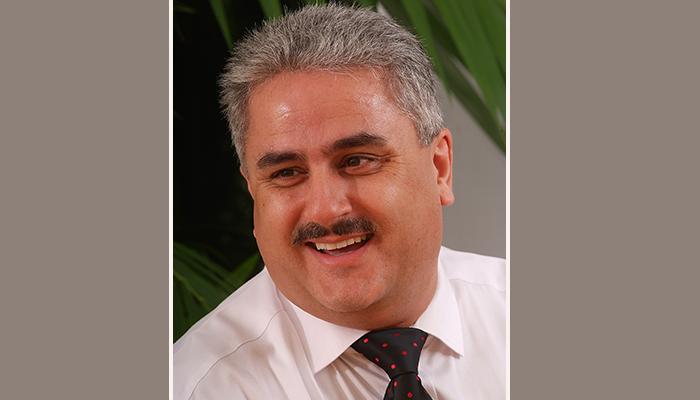
Luxury drives hotels supply in Riyadh and a promising 2015 ahead for Jeddah
PwC has published its second hotel forecast for the Middle East, focusing on six major cities in the region; Riyadh, Abu Dhabi, Doha, Dubai, Jeddah, and Muscat. The forecast uses a number of economic variables to forecast hotel occupancy, Average Daily Rate (ADR) and Revenue per Available Room (RevPAR) in each of the six cities and the region in 2015 and 2016.
Despite a number of challenges faced by the region in 2014, such as the fall in oil prices and devaluation of the Euro against the dollar, growth fundamentals for the Kingdom remain strong, Jeddah nearly saw a double digit rise in RevPar (9.9%) overtaking Dubai as the city with the highest RevPar, while Riyadh rose only by (1.1%) and ADR tumbled (-5.0%) in 2014 , while Jeddah again saw the strongest gain in ADR, mainly driven by growth in religious tourism, as Jeddah is the principal stop over for Muslims en route to Mecca and Medina.
In common with several of our other cities, RevPAR for 2014 in Jeddah was in line with PwC expectations, though the mix was slightly different, with occupancy a little lower than expected at 74%, and ADR slightly higher, at $258. Some 4,000 rooms were expected to be added in 2014, but only around half of those actually opened. Some 2,700 are now expected in 2015.
Looking ahead, 2015 seems promising for Jeddah, where it is best placed alongside Abu Dhabi, with forecast growth in RevPAR of 7.3%, and 6.7% respectfully.
“Jeddah continues to be a significant business destination, and demand remains strong and stable. Religious tourism is growing even more strongly, with the number of pilgrims to Mecca expected to reach five million in 2015,” said Philip Shepherd Partner – PwC Middle East Hospitality and Leisure Leader. Adding “The Saudi authorities are currently building a new airport near Mecca, with the aim of streamlining the flow of Hajj pilgrims: flights from some countries will be routed via Jeddah, and others through the new airport, once it is completed.”
Moreover, ADR rates will dominate the Kingdom, with Jeddah and Riyadh ranking as the most expensive cities in the region at $275 and $242 respectively, both overtaking Dubai where negative ADR growth is forecast.
Riyadh is almost exclusively a business destination, however a number of its hotels are in need of modernisation and upgrading, and this may be affecting their ability to charge higher prices. “Looking ahead, supply continues to rise, with 5,500 rooms in construction, predominantly in the upper luxury scale,” said Alison Grinnell, Director – PwC Middle East Hotels Leader.
Despite a number of challenges faced by the region in 2014, such as the fall in oil prices and devaluation of the Euro against the dollar, growth fundamentals for the Kingdom remain strong, Jeddah nearly saw a double digit rise in RevPar (9.9%) overtaking Dubai as the city with the highest RevPar, while Riyadh rose only by (1.1%) and ADR tumbled (-5.0%) in 2014 , while Jeddah again saw the strongest gain in ADR, mainly driven by growth in religious tourism, as Jeddah is the principal stop over for Muslims en route to Mecca and Medina.
In common with several of our other cities, RevPAR for 2014 in Jeddah was in line with PwC expectations, though the mix was slightly different, with occupancy a little lower than expected at 74%, and ADR slightly higher, at $258. Some 4,000 rooms were expected to be added in 2014, but only around half of those actually opened. Some 2,700 are now expected in 2015.
Looking ahead, 2015 seems promising for Jeddah, where it is best placed alongside Abu Dhabi, with forecast growth in RevPAR of 7.3%, and 6.7% respectfully.
“Jeddah continues to be a significant business destination, and demand remains strong and stable. Religious tourism is growing even more strongly, with the number of pilgrims to Mecca expected to reach five million in 2015,” said Philip Shepherd Partner – PwC Middle East Hospitality and Leisure Leader. Adding “The Saudi authorities are currently building a new airport near Mecca, with the aim of streamlining the flow of Hajj pilgrims: flights from some countries will be routed via Jeddah, and others through the new airport, once it is completed.”
Moreover, ADR rates will dominate the Kingdom, with Jeddah and Riyadh ranking as the most expensive cities in the region at $275 and $242 respectively, both overtaking Dubai where negative ADR growth is forecast.
Riyadh is almost exclusively a business destination, however a number of its hotels are in need of modernisation and upgrading, and this may be affecting their ability to charge higher prices. “Looking ahead, supply continues to rise, with 5,500 rooms in construction, predominantly in the upper luxury scale,” said Alison Grinnell, Director – PwC Middle East Hotels Leader.
Share:
ADD TO EYE OF Riyadh
MOST POPULAR
Saudi Arabia, Indonesia sign MoU for mining cooperation
Friday 18 April, 2025 9:18Dubai Maritime Authority reports outstanding performance in 2024
Thursday 17 April, 2025 8:52DP World’s latest vessel makes maiden call at Jebel Ali Port
Friday 18 April, 2025 9:32ADEX participates in TXF Middle East & Africa 2025 to advance regional export finance collaboration
Thursday 17 April, 2025 8:47Diriyah awards Royal Opera House contract worth SAR 5.1B
Thursday 17 April, 2025 9:05 ×


























